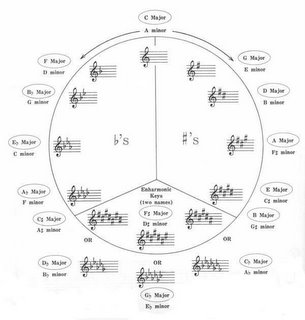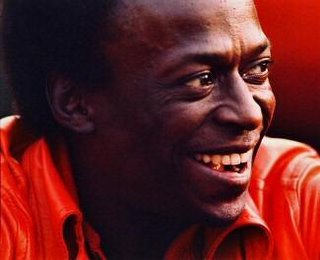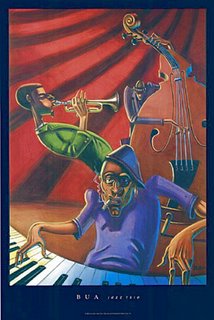Thelonious Monk
[NOTE: The second post in the Musical Theory series of posts is below]

http://thelonious-monk.com/
Born: October 10, 1917
Died: February 17, 1982
Instrument: Piano
Early Monk:
There isn't much known about Monk's childhood, except he was born in North Carolina, starting playing piano at age six, and moved to Manhattan with his family in 1930. There, Monk's first gig was making rounds as an organist, backing an evangelical preacher. He got a house gig at Minton's Playhouse, which is where he would cement his unique improvisational style, hard-swing. Influences of Monk include Art Tatum, Duke Ellington, James Johnson, and many other early stride pianists. He released his first LP as leader, Genius of Modern Music Vol. 1, in 1947.
Monk vs. "The Man":
Monk had many run-ins with the police during his career, much like every other working black musician in New York at the time.
One such incident was in August 1951, when the New York police searched a parked car occupied by Monk and his friend Bud Powell. As was typical of the time, they found narcotics in the car, which they believed belonged to Powell. Monk refused to testify against his friend, and his Cabaret Card was confiscated. The Cabaret Card was a license, at the time, for a musician to play in a venue where liquor was sold. Without this card, Monk's gig options were severly limited. He spent most of this time playing theatre gigs, out of town, composing and recording.
A second incident was in 1958, when Monk and Baroness Pannonica de Koenigswarter, a wealthy patron of several Jazz musicians of that era, were arrested and detained in Delaware. When monk once again refused to cooperate with the police, he was beaten with a blackjack. The police were authorized to search the vehicle, and once again found narcotics. It is unknown if these, and the narcotics found in 1951, actually belonged to Monk and his companions, or if they were planted by the police. Judge Christie of the Delaware Superior Court ruled that the detention of the pair and beating of Monk was unlawful and rendered the consent to the search void, as it was given under duress.
Monk's Work:
Monk recorded with Blue Note Records in the period from 1946-1952, Prestige Records 1952-54, and signed with Riverside Records following that. Monk's work was highly respected by other professionals in the music trade, but was difficult for record companies to market to the public. Monk's first record with Riverside was Thenlonius Monk Plays Duke Ellington which made him more accessible. Following this, he was requested to put out one more cover album before he released Brilliant Corners in 1956, his first LP of all original Monk material. Monk appeared on the cover of Time magazine in 1964, and was signed to Columbia records about this same time. After Monk died in 1982, his music gained a wider audience and he eventually became a Jazz icon. Clint Eastwood made a documantary, Straight, No Chaser, about Monk's life and work in 1989.
Possible Illness and Death:
During the early 1970's, Monk disappeared from the Jazz scene. His last recording was completed in November 1971, and it was said that during this time Thelonious became an extreme introvert. He could go entire tours without talking to anyone. Occasionally, he would stop playing, stand up, and dance while the band continued without him. His playing style was highly unusual, syncopated, and percussive. He was hospitalized several times for mental illness, and although the diagnosis is not known, guesses include bipolar disorder or schizophrenia. Symptoms that Monk exhibited would later be seen in Syd Barrett, of Pink Floyd fame. It is unknown whether this was a serious mental disorder, or if Monk was simply "ahead of his time".

Recommended Monk Listening:
- Thelonious Monk And John Coltrane
Fantasy OJC-039
Wilbur Ware, Shadow Wilson, Art Blakey
- Thelonious Monk, Tokyo Concerts
Columbia 38510
Charlie Rouse, Butch Warren, Frankie Dunlop
*listen to the quirky solo on I'm Getting Sentimental Over You
- The Complete Blue Note Recording of Thelonious Monk
Mozaic 101
Four LP set covering from 1947-1957
[Link Removed, File Available Upon Request]








